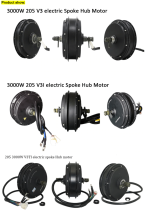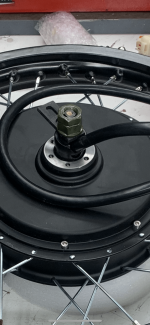howard85may
10 mW
- Joined
- Apr 19, 2020
- Messages
- 25
Found this motor recently on QS motor website and aliexpress:
http://www.cnqsmotor.com/en/article_read/QS%20Motor%203000W%20205%2050H%20V3TI%20bicycle%20electric%20motor/bicycle%20spoke%20motor/e-bike%20motor/885.html
https://www.aliexpress.com/item/4000640216373.html?spm=a2g0o.productlist.0.0.64fe31ce5VMhef&algo_pvid=5139b9c6-105c-4c8c-b066-7829a93dcd9c&algo_expid=5139b9c6-105c-4c8c-b066-7829a93dcd9c-7&btsid=0ab50f6115889687867976119ee7de&ws_ab_test=searchweb0_0,searchweb201602_,searchweb201603_
Is anyone running this newer version? How does it compare to standard v3 in terms of output?
I looked around here a bit but have not seen it discussed anywhere.
Any feedback would be great.
http://www.cnqsmotor.com/en/article_read/QS%20Motor%203000W%20205%2050H%20V3TI%20bicycle%20electric%20motor/bicycle%20spoke%20motor/e-bike%20motor/885.html
https://www.aliexpress.com/item/4000640216373.html?spm=a2g0o.productlist.0.0.64fe31ce5VMhef&algo_pvid=5139b9c6-105c-4c8c-b066-7829a93dcd9c&algo_expid=5139b9c6-105c-4c8c-b066-7829a93dcd9c-7&btsid=0ab50f6115889687867976119ee7de&ws_ab_test=searchweb0_0,searchweb201602_,searchweb201603_
Is anyone running this newer version? How does it compare to standard v3 in terms of output?
I looked around here a bit but have not seen it discussed anywhere.
Any feedback would be great.





